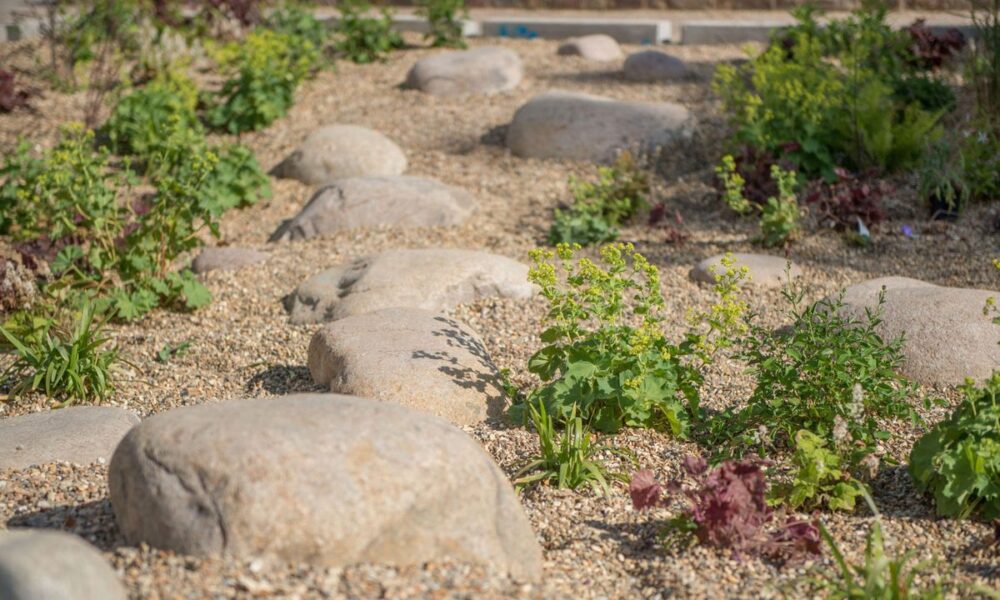Home gardeners are increasingly prioritizing sustainability as climate change and water scarcity become pressing global issues. With the American Southwest facing ongoing drought, many are turning to innovative gardening techniques that conserve water while keeping plants healthy. Experts forecast that by 2026, water-wise gardening trends will be essential for gardeners looking to reduce their carbon footprint and make the most of precious natural resources.
To explore these trends, we consulted with gardening professionals who shared their insights on effective practices such as mulching, installing irrigation systems, and utilizing on-site water management strategies. These approaches not only enhance garden aesthetics but also promote ecological efficiency.
Innovative Mulching Techniques
Mulching, a method of covering soil with a layer of material, is gaining recognition for its water conservation benefits. This straightforward technique can significantly reduce water loss due to evaporation. Sarah Menz, a master gardener with a Master’s in Sustainability, emphasizes the importance of biodegradable mulches, which not only conserve water but also improve soil health.
“By applying a layer of biodegradable covering to the tops of your garden beds, you’ll reduce how much water is lost due to surface evaporation, meaning that you won’t need to water as frequently,” Menz explains. Common biodegradable materials include garden compost, leaf mold, and wood chips.
In addition to conserving water, mulching also serves as a barrier against weed growth, which can save time and effort in garden maintenance. Menz points out that organic mulches can insulate roots during winter months and enhance soil nutrient levels as they decompose.
Effective Irrigation Systems
Installing an efficient irrigation system is another key strategy for sustainable gardening. Modern systems can range from complex drip pipes to simpler DIY options that are equally effective. Laura Osteen, principal designer at Secret Garden Landscapes in San Francisco, highlights the benefits of using these systems to deliver water directly to plant roots.
“Watering using an irrigation system can be beneficial in several ways, including conserving water and maintaining plant health,” Osteen states. By minimizing evaporation and keeping foliage dry, these systems help prevent fungal diseases and promote healthier crops.
With advancements in technology, gardeners can select from a variety of irrigation controllers that monitor local conditions. Osteen advises utilizing site-specific controls that adjust watering based on wind, precipitation, and temperature for maximum efficiency.
Maximizing On-Site Water Management
In addition to irrigation systems, effective water management on-site is crucial for sustainable gardening. Osteen advocates for techniques such as bioswales and rain gardens, which capture and filter stormwater runoff, allowing it to naturally replenish the soil.
“Bioswales are vegetated ditches designed to collect water before filtering it back into the ground,” Osteen explains. These features not only conserve water but also enhance biodiversity by supporting native plant species and pollinators.
Rain gardens serve a similar purpose by temporarily holding rainwater before allowing it to soak into the soil. Plants like Asclepias incarnata, known for attracting Monarch butterflies, are ideal for these gardens, combining aesthetics with ecological benefits.
Utilizing rain barrels remains a popular method for harvesting rainwater from rooftops. While sometimes considered unattractive, decorative rain barrels are available in various styles that can complement garden designs. Osteen notes that harvested rainwater is beneficial for plants, being free of chemicals often found in municipal water supplies.
As homeowners seek to adopt more sustainable practices, the trend towards water-wise gardening is gaining momentum. By embracing techniques such as mulching, installing effective irrigation systems, and maximizing on-site water, gardeners can make significant strides toward conserving resources while enhancing the beauty and health of their gardens.
As we move closer to 2026, these practices will not only help address the challenges of climate change but also inspire a new generation of environmentally conscious gardeners.







